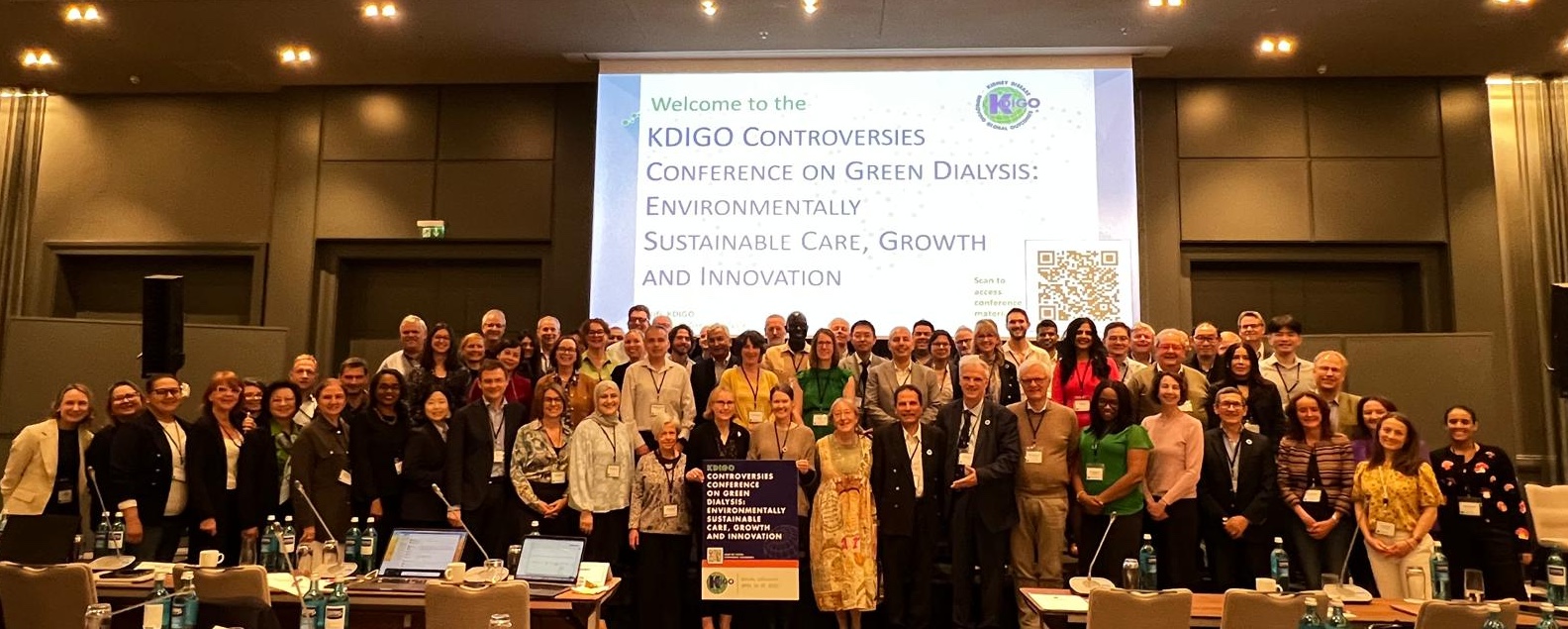
Speeding through the German countryside, I am on my train home from the KDIGO Green Dialysis Controversies conference in sunny Berlin. Until now, KDIGO was more familiar to me from chronic kidney disease clinical guidelines, and I very rarely travel abroad to conferences, trying to keep my carbon footprint down.
But this one was worth it.
It was a privilege to meet so many people leading in the field of sustainable kidney care - indeed leading in kidney care generally - from all over the world. People whose names I know from their many publications, and patients bringing invaluable insights from very different experiences and settings. It was great also to be contributing alongside collaborators from the KitNewCare project - Prof Karin Gerritsen from Utrecht and Prof Gabriele Donati from Modena, as well as several old friends from UK Green Nephrology.
The conference began by setting out the problem we were there to solve: I and others described what we know about the huge environmental and social burden of dialysis care worldwide. The carbon footprint of a year on haemodialysis is somewhere between 4 and 10 tonnes of CO2e, depending the energy mix and transport distances in the countries involved, as well as local equipment and practices. (For comparison, the World Bank estimates the average per person carbon footprint at 4.7 tonnes CO2e per year, globally). Dialysis also consumes a huge amount of water and produces a huge amount of plastic waste - a daily issue for patients dialysing at home, with bins quickly filled to overflowing, often drawing the attention of neighbours. And yet of course dialysis is a life-saving treatment, and at this moment there are millions of people in lower and middle income countries needing dialysis, unable to access it.
We then heard some examples of sustainable practices already happening - from Germany, Mexico and Utrecht. There is plenty of good work to build on.
The main work of the conference then began, as we were split into our three working groups:
- Group 1 - Optimising existing haemodialysis (HD) (in-centre and home) and peritoneal dialysis (PD) practices
- Group 2 - Identifying and developing green innovations in HD
- Group 3 (mine) - Identifying and developing green innovations in PD
Over the next two-and-a-half days, we discussed in detail the evidence (collated and shared with us/each other beforehand) on our allocated topic; the priority actions for improving sustainability together with patient experience and access; the technologies in development; the important knowledge gaps. Our task was to identify points of consensus and points of disagreement or uncertainty ('controversies'), together with research questions. Our valiant Group co-chairs worked late into the night to distil the key points for presentation (and critical review!) the following mornings.
I am so impressed with the KDIGO process and the dedication and professionalism of all involved, and, truthfully, it is a relief to have green dialysis treated with the urgency and seriousness that it deserves. It's not finished yet: conclusions and research suggestions from the conference will now be crafted into a published manuscript. I am confident that this will be as thoughtful and impactful as the process was thorough, and, together with the relationships created in Berlin, will help us all to turbo-charge progress on sustainable kidney care.
Very positive progress Frances, great to have KDIGO involvement in promoting the sustainability imperative.🙂
Frances, I know forward osmosis was on the agenda for discussion, did anyone discuss Miniaturized Vapour Compression Distillation technology, which can produce sterile water at source, but the product literature suggests can replace RO? Or has anyone any insights into if this is a legitimate alternative?
Thanks Eleanor - it was not discussed in my group but I wonder if it might have been in Group 2. I'll ask.
Please log in or sign up to comment.